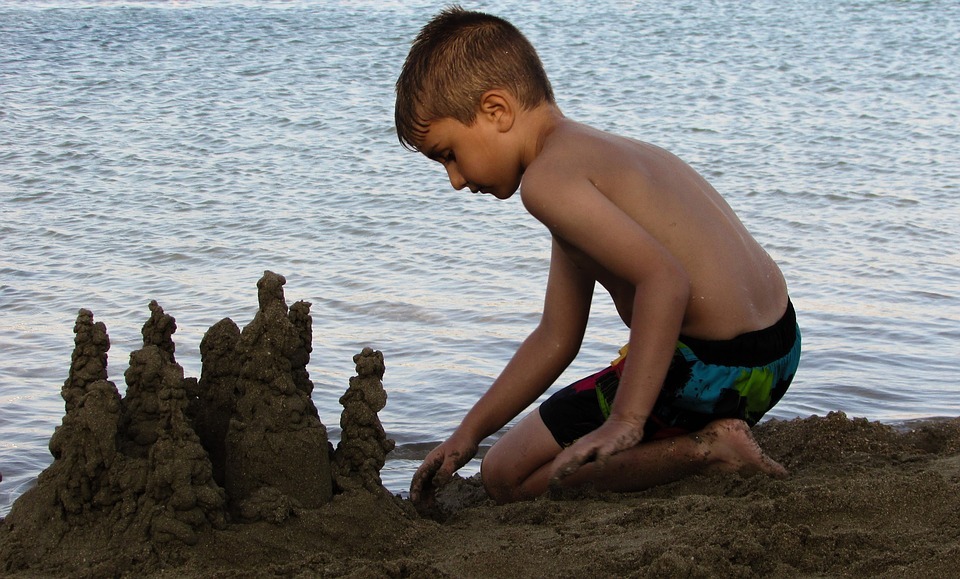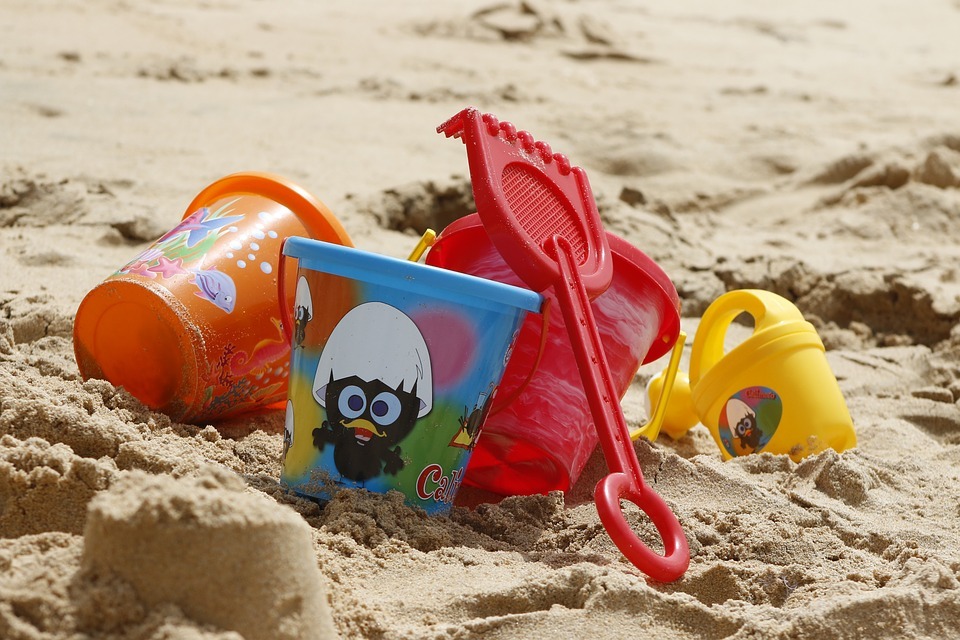A day on the beach is not complete without building sandcastles especially when you’re with the kids. The fun part about building sandcastles is using your imagination. You can build a simple one or show off your skills and build a show-stopping architect’s dream sandcastle.
Before you start building a sandcastle, make sure that you have all the things needed.
Sand and Water
OK, that’s kind of obvious … But, you will need to make sure you’re fairly close to the water to get the best sand possible.
Shovel
Building sandcastles requires a lot of digging, therefore, having a lightweight shovel will be helpful. Depending on how big you’re going to build, you may need different size shovels.
Buckets
Of course, these are very useful when building sandcastles. You can use a bucket to gather water, to mix sand and water, and to mold sand as well.
Carving and Decorating Tools
You can use stuff you have around the house like cups and other items to use for molding and sculpting or you can purchase elaborate sandcastle building tools.
When you have your tools in place, the next step is to find a good spot to build your sandcastle. Sandcastles are best built with fine-grained sand. If bikes can be ridden easily in the sand, its sands are good for building sandcastles. But not everyone brings bikes to the beach, thus, another way to test the sand is by taking a small portion of it and placing it in a bucket of water. In that way, you will be able to tell if the sand contains clay. If there is clay, the water will turn dark.
The best sands for building sandcastles are those which doesn’t contain finer clay materials. It is because sand with rougher and jagged edges are better used in building sandcastles than smooth beach sand. If the beach you’re staying in doesn’t have fine-grain sands, don’t fret because you can still build a sandcastle.
The secret is to use a lot of water, but not too much. The amount of water used to mix with sand is important because the strength of your sandcastle will depend on it. Using too little water will make your sandcastle crumble. However, using too much water will make your sandcastle weak and gloppy. Based on the traditional estimates, the ideal amount of water is one bucket for every eight buckets of sand. That is 12.5 percent of water. However, a new research revised it and reduced it to only one-part water combined with 99 parts dry sand.
Once you’ve found a good spot at the beach, the next step is to build a base. This will give your sandcastle a strong foundation. You can alternate between piling the sand up using the shovel, saturating it with water, then compressing it using your feet and shovel. The larger your base is, the easier it will be to carve different forms. You can also build a tower for your castle using buckets. Just fill them up with sand and compress it using your hands. Turn it over and once you pull off the bucket, a circular pack of sand will be made. You may use different sizes of buckets for different sizes of towers.
After finishing the base and towers, it’s time to start sculpting. Use your imagination to decorate and add shapes to your castle. If you can find shells around, they are also good decorations for sandcastles. A straw can also be a good sculpting tool because it can be used to carve fine details.
When you finish creating a basic sandcastle, create a moat by digging a circular area around it. Make sure that it’s not too close to the structure. This will defend your castle especially when it’s built close to the high-tide mark. Then you can stack up wet sand to build walls. Add decorations to your sandcastle by hollowing the moat walls and creating designs like windows, and arches, like the Greek structures, or any other designs that come up your mind.
There are also two methods you can follow in building a sandcastle.
Soft-packing
This method starts with mounding up a big pile of sand then poking a lot of holes into it. After that, pour buckets of water into the holes and stomp on the pile until it becomes solid. Then, use your hands to pack and shape the parts of your sandcastle until it becomes stable. Once it’s stable, you can carve and smoothen it. Keep on pushing and smoothing it as you work your way down the pile.
Hand-stacking
This method is composed of five moves which are the mix, scoop, plop, flatten, and jiggle.
Mix
You can use your hands and feet to do this. Well, mixed sand will create a stronger sandcastle.
Scoop
It’s easier to design big structures so scoop handfuls of sand.
Plop and Flatten
Plop the handfuls of sand to your structure then flatten them with your hands. This should be gently done because sandcastles are delicate structures. If you’re building the towers, remember to keep your hand on top of the sands. If you’re building a wall, your hands should be on the sides.
Jiggle
Jiggle new pile of sands on the sandcastle. This will help fill the spaces in the structure and it will keep the wet sand from flowing down. Once the wet sand has settled, you can stop jiggling sand because doing it further may cause cracks in your sandcastle.
Always remember to keep the sand moist while building your sandcastle to maintain it intact. Another technique for a strong foundation is to pack sand tightly while building it. Also, when carving details, it’s better to do it from the top down. This way, the excess sand will not be thrown down on the lower carvings.
These are just some tips on building sandcastles on the beach and how to keep them standing for a long time. Always remember that the design and beauty of the sandcastle you will be created depends on your imagination. The most important part is to enjoy!


